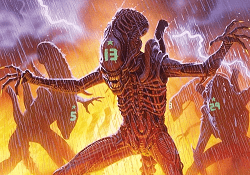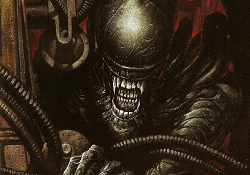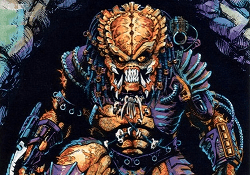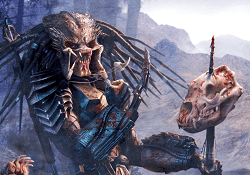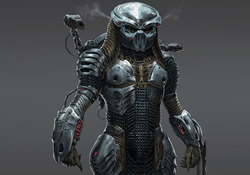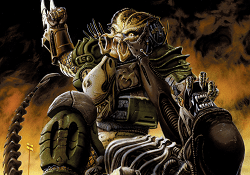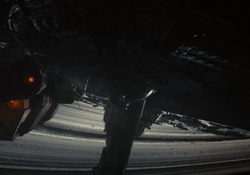Xenomorph Egg: Guide To The Alien Ovomorph
The Xenomorph egg, commonly known as the Ovomorph, is a central element in the Alien franchise, representing the genesis of one of the iconic Xenomorphs. These eggs are the primary means by which the Xenomorph species propagates and the basis of the Alien life cycle, introducing an array of Xenomorph variants throughout the series. This guide delves into the diverse types of Xenomorph eggs depicted in the films and the expanded universe, offering an in-depth exploration of each type's unique characteristics and role in the broader Alien mythology.
Regular Alien Egg
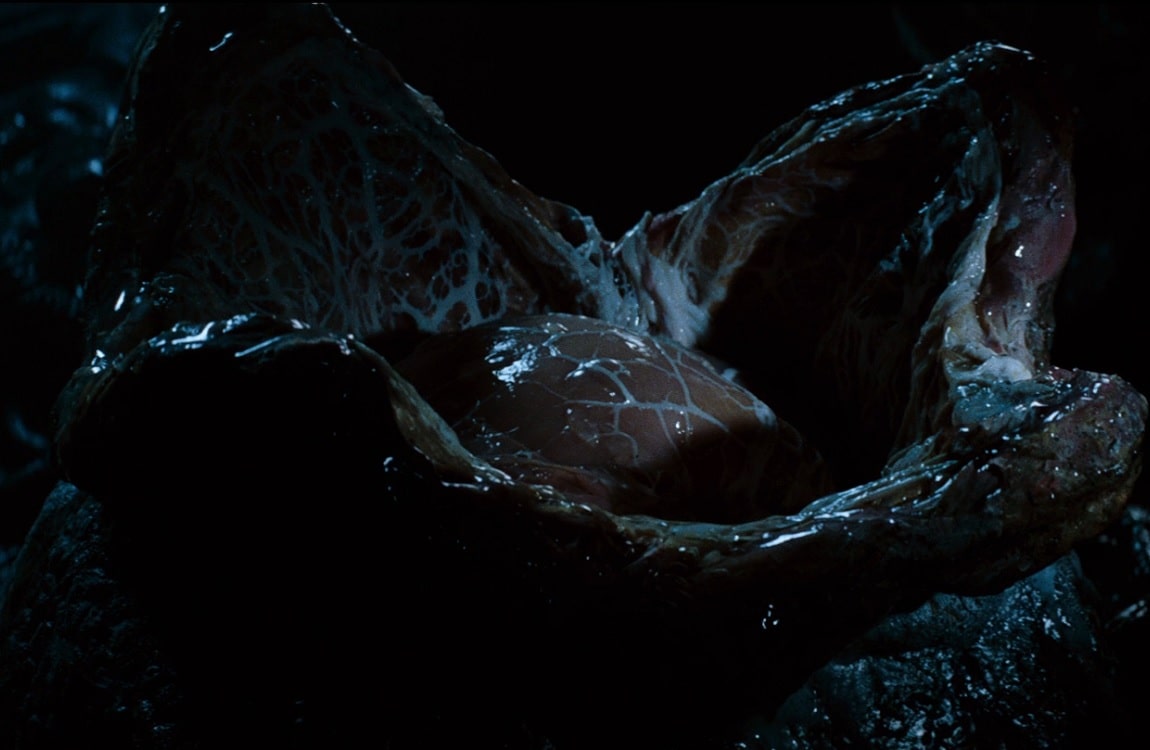
The Regular Alien Egg is the most recognized form of Ovomorph. Typically found in the nests of Xenomorphs or Space Jockey ships, these eggs are characterized by their leathery, dark exterior and a distinctive four-petaled opening mechanism that unfurls when a potential host approaches. Inside resides the Facehugger, a parasitic stage in the Xenomorph's life cycle. The Xenomorph egg appears to be partly translucent, and has a lifespan of hundreds, if not thousands of years. Some sources show that the Alien eggs bleed acid when hurt, but it might be less potent than for other Xenomorph variants. The egg's design, often attributed to H.R. Giger's biomechanical style, is often replicated in other sci-fi and horror franchises.

The Alien Queen's Egg Sack
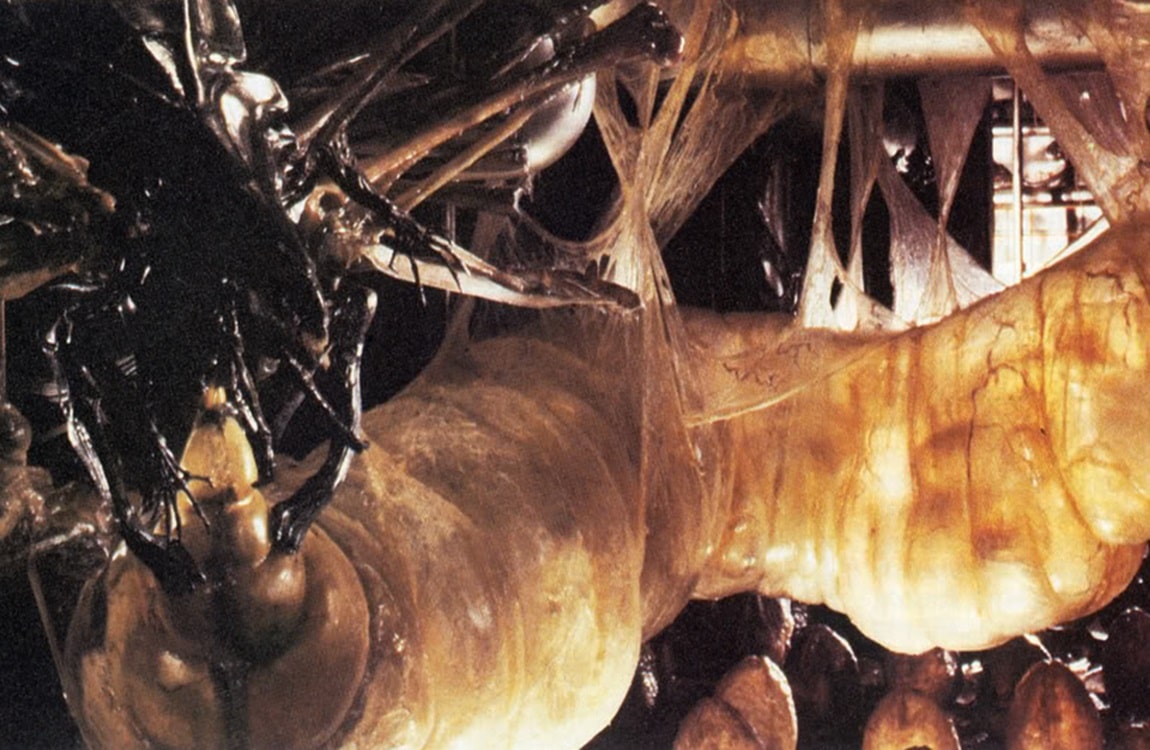
An iconic sight in the Alien saga is Queen Xenomorph's egg sack (also known as the ovipositor), appearing first in Aliens and designed by director James Cameron. This massive, pulsating organic structure is an extension of the Queen herself, showcasing a grotesque yet fascinating aspect of Xenomorph biology. The egg sack serves as a breeding factory, continuously producing eggs to sustain the hive. Its destruction is often pivotal to the plot, as it effectively cripples the Xenomorph colony's ability to expand. The Alien Queen can detach from the egg sack when the need arises, and theoretically grow another one later.
Eggmorphed Egg
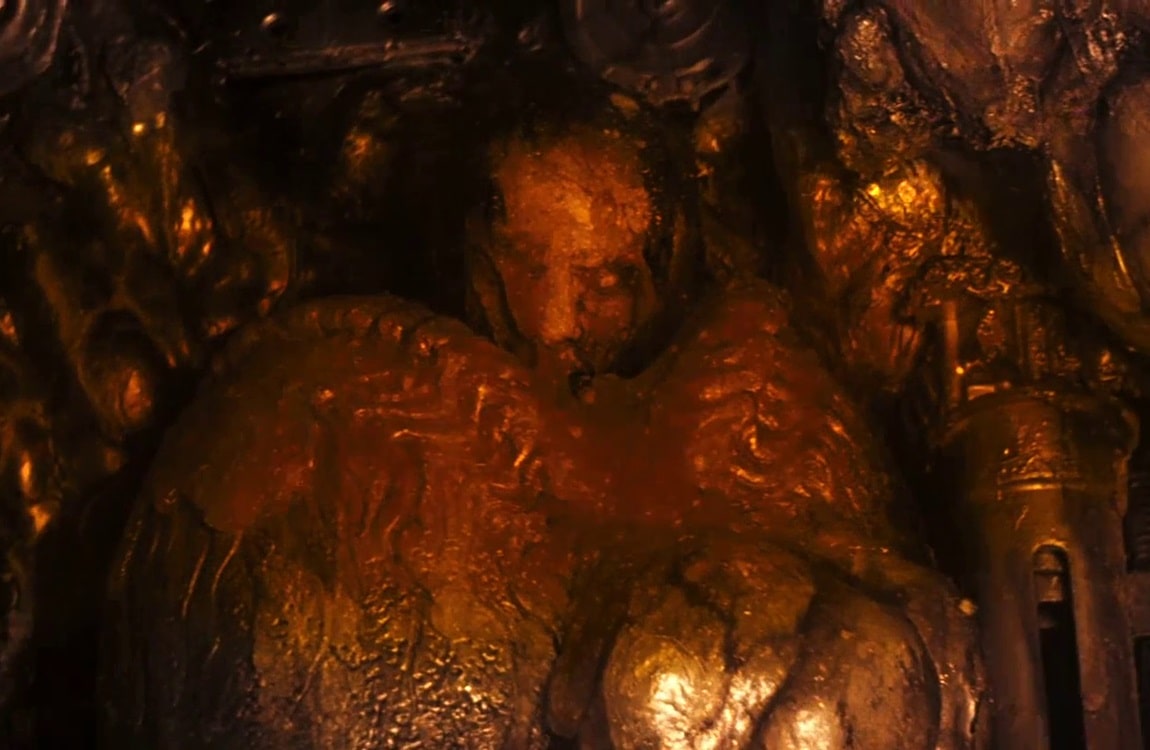
The concept of the Eggmorphed Egg introduces a horrifying aspect to the Xenomorph lifecycle. In the director's cut of the original Alien film, both Brett and Dallas are slowly transformed into an egg, suggesting a secondary method of reproduction for the Xenomorphs. This process, though not widely explored in the main films, adds a layer of body horror and emphasizes the adaptive and relentless nature of the species. The secondary lifecycle is somewhat inefficient, requiring two hosts for one Xenomorph. However, if this Xenomorph would become a Queen, the life cycle would revert to its traditional style of egg-laying.

"Emergency" Egg
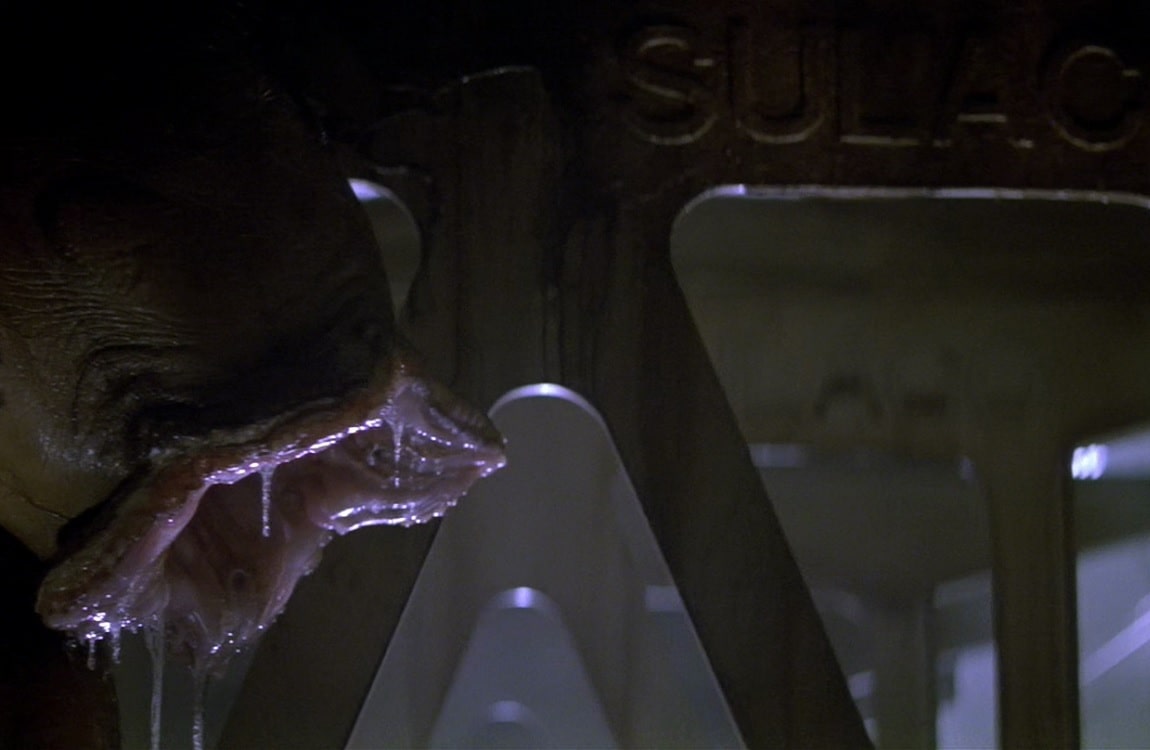
The "Emergency" Egg is a speculative concept within the Alien fan community. It hypothesizes that in extreme situations, such as the potential extinction of their kind, an Xenomorph Queen can lay a smaller egg without its ovipositor. This would explain the mystery egg seen at the beginning of Alien 3, where a seemingly small "upside down" egg was placed under an unknown position of the USS Sulaco, or its dropship. This Emergency Egg (sometimes also called the Alien Queen egg), would contain one Queen Facehugger (also known as the Royal facehugger), which could infect two different hosts and deposit two embryos. One would be the Queen herself, and the other a protector for her, which was the Xenomorph Runner in Alien 3.
Cloned Xenomorph Egg
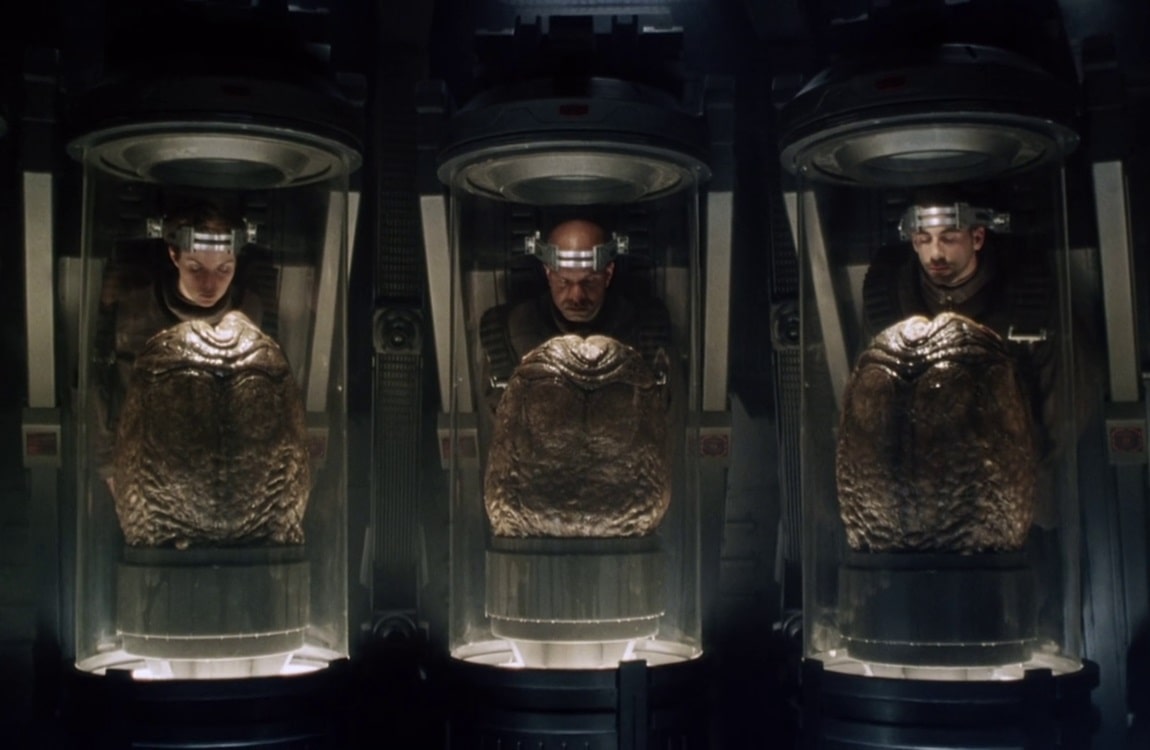
With the progression of the Alien storyline involving genetic experimentation, as seen in "Alien Resurrection," the Cloned Xenomorph Egg was introduced. These eggs are products of human attempts to harness and replicate Xenomorph biology with strains of human DNA (Ripley 8), often resulting in various abnormalities and mutations. The Cloned Xenomorph egg was more leathery and brownish in color than the Cloned Xenomorphs themselves. These eggs showcased more movement, "wobbling" horizontally in the presence of potential hosts. The Cloned Xenomorphs set traps with these eggs, placing them in strategic locations on the USM Auriga.
Praetomorph Egg
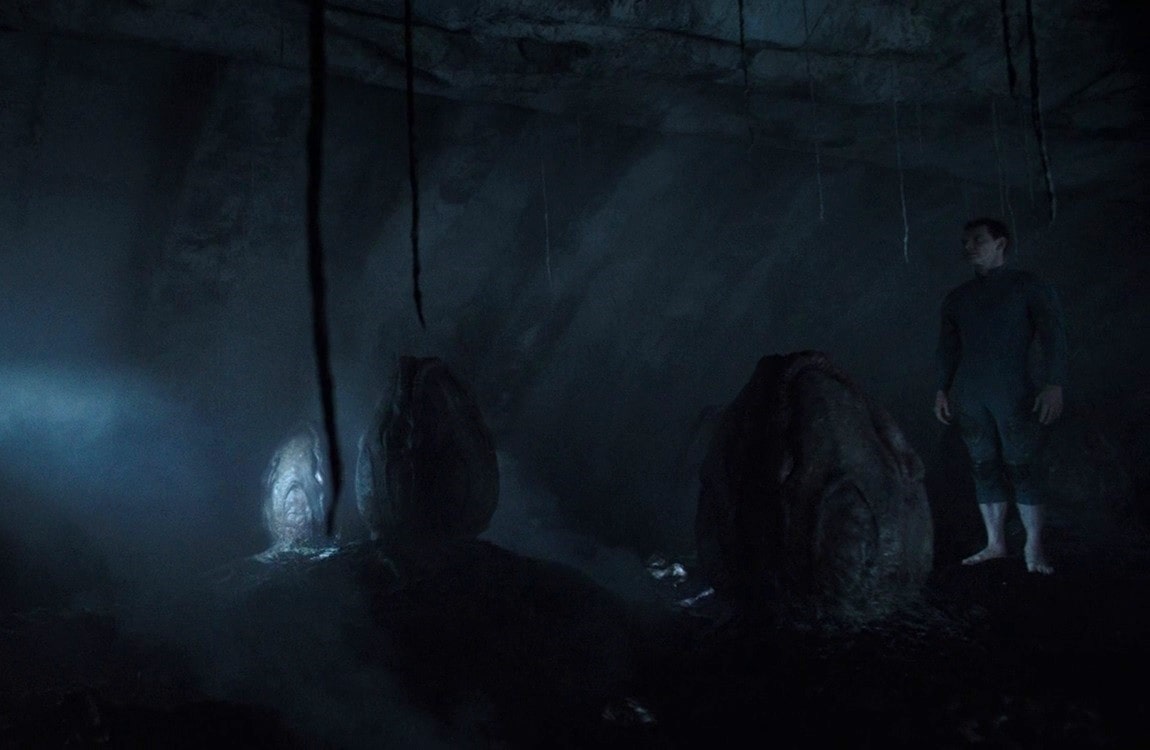
The Praetomorph (also known as the Protomorph) eggs, differing somewhat from the traditional Xenomorph eggs, showcase a distinct design that reflects the experimental influences of David that he conducted between Prometheus and Alien: Covenant. These eggs are characterized by notably larger petals and a more rounded, bulbous form. Stored in a humid, possibly dry-heated, basement beneath the Engineer structure, David had successfully bio-engineered a minimum of half a dozen of these eggs. At least two of these eggs were observed to hatch. Interestingly, there was no evidence of an Alien Queen's involvement in their creation, suggesting that these eggs developed from a much smaller size independently. The Praetomorph Facehugger, Chestburster, and adult differ from regular Xenomorphs as well, having a much faster life cycle.
White Hybrid Egg

The White Hybrid Egg, featured in the somewhat confusing Aliens vs. Predator: Deadliest of the Species comic series, results from the crossbreeding of Xenomorphs with different species. This genetic amalgamation leads to eggs with unique appearances and properties, further expanding the biological diversity of the Xenomorph species. The White Hybrid egg was much smaller than a regular egg and had a bulbous form, similar to the Praetomorph eggs. The facehugger emerging from the egg was different as well, having protective spikes at the back. The final result of this egg and facehugger was the Trophy Hatchling, an intelligent White Hybrid, who joined forces with the legendary Ash Parnall and Big Mama Predator.
Pink Egg

A more exotic variant is the Pink Egg, which appeared among normal eggs in the Aliens: Kidnapped comic book. The facehugger from this egg produced the unique variant of the chestburster - the black Bodyburster (also known as the Goreburster) that would not grow after hatching. The Goreburster's host experiences flu-like symptoms, likely due to the creature's size. One such egg, smuggled to a colony by Weyland-Yutani employees, led to havoc when the hatchling caused victims to explosively react to its poisonous bite. The Pink Egg adds a visual diversity to the otherwise dark and ominous palette typically associated with the Xenomorph's reproductive methods.
Mobile Egg
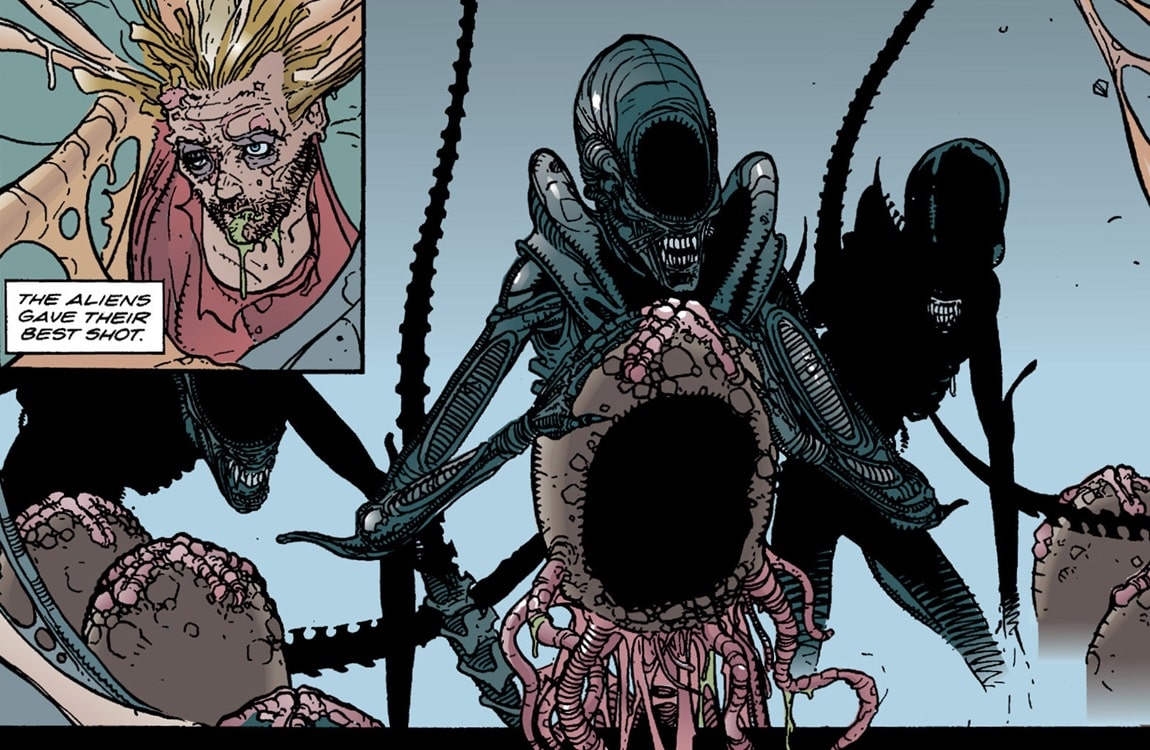
A question that has sometimes arisen in the Alien Expanded Universe is: Can the Xenomorph Egg move around? Although the eggs show pulsating movement, there is not that much evidence to support this, apart from the speculation that the Sulaco egg crawled to the ceiling itself. As shown in the Aliens: Labyrinth, the Alien eggs have tentacle-like "roots", that could act as legs, giving a limited mobility to move slowly. However, the hive in Labyrinth was infected by an unknown sickness, resulting in different kinds of mutations and anomalies. These roots are also partly visible in the hive in Aliens, although these could act as "nutritional veins" for the eggs.
Neomorph Egg Sack

In "Alien: Covenant," the Neomorph Egg Sack is introduced, representing a different lineage within the Xenomorph family. Unlike the traditional Ovomorph, these sacks do not contain Facehuggers but instead house spores that infect hosts with Neomorphs. These sacks were created after David bombarded the Engineer planet (also known as Paradise, or Planet 4) with the Black Goo Pathogen. In addition to eradicating the Engineers, the pathogen reacted with the flora, producing the sacks, which were not specifically created by David. This variation signifies the diverse reproductive strategies within the Alien universe, showcasing a much more efficient life cycle than the Xenomorph's.
Miniature Egg
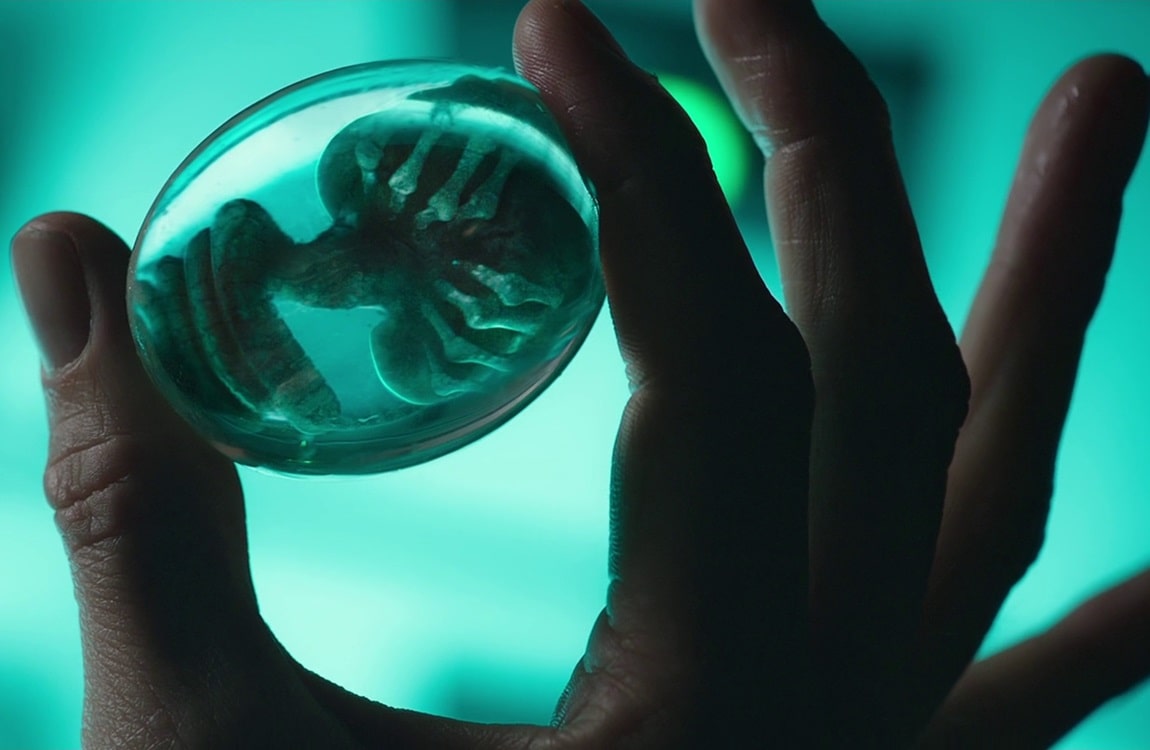
In Alien: Covenant, David stashed his own Emergency miniature eggs inside his own body by swallowing them in his laboratory. Back aboard the USCSS Covenant after taking the role of Walter, he regurgitated two miniature eggs (containing miniature facehuggers) and placed them next to the colonist embryos in cold storage. These might have been miniature versions of the already-seen Protmorph eggs, or actually a new generation of Xenomorph eggs that were left for the sequel. David surely had devious plans for the people aboard the ship, planning to produce a big array of new creatures.
Alien Poster Egg
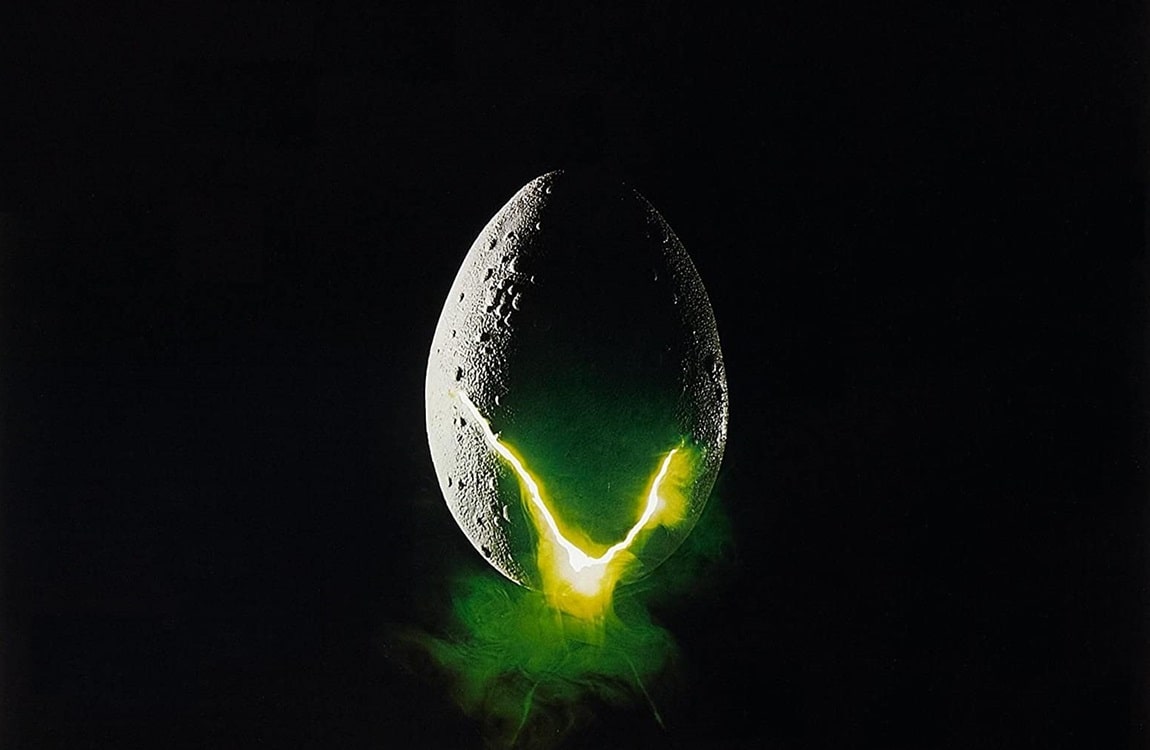
The Alien Poster Egg has become a symbol of the franchise itself, prominently featured in promotional materials and movie posters. This imagery encapsulates the mystery and horror central to the Alien saga, although this kind of egg never made it to the movie itself, nor its sequels. The poster egg oozes a green substance, somewhat similar to Alien acid, or the Black Goo Pathogen seen in the later movies. Underneath the egg is a mysterious net-like surface, perhaps depicting the floor of the Derelict Ship or an Alien hive.
NECA Alien Egg Carton
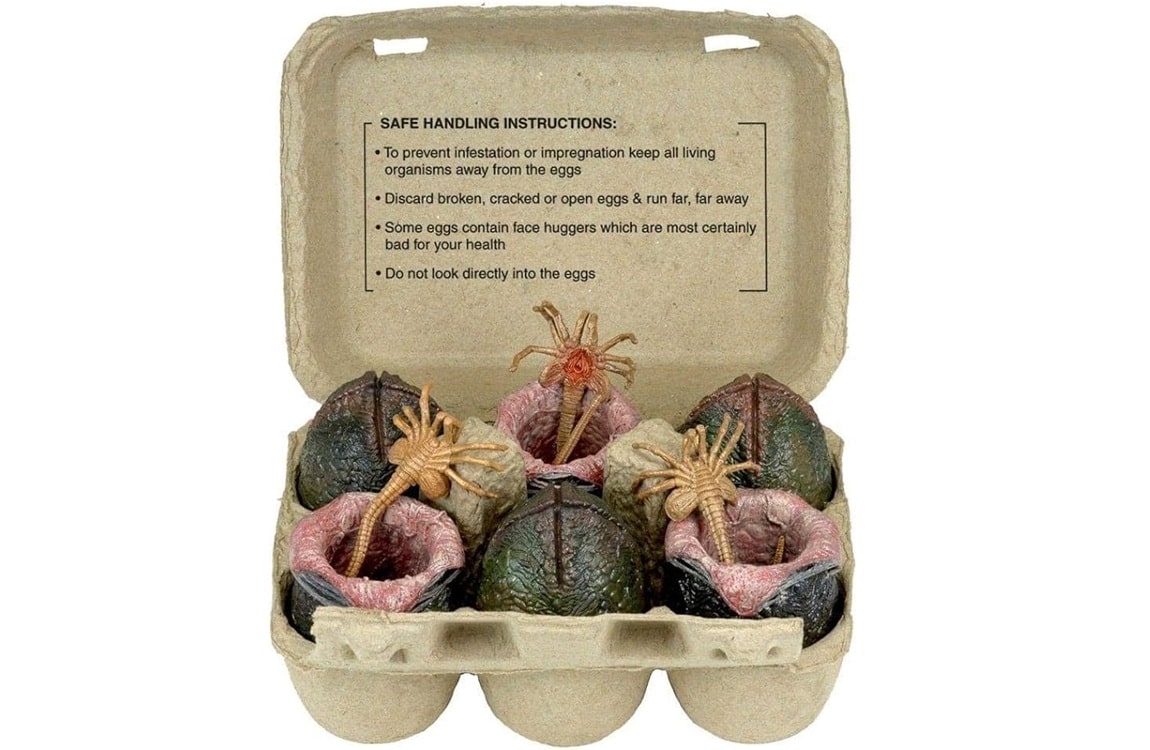
The Egg Carton is a unique collectible item produced by NECA Toys, known for their detailed and faithful reproductions of movie memorabilia. This set includes six miniature Xenomorph eggs at various stages of development, from closed to fully opened, revealing the Facehugger inside. The eggs are packaged like regular chicken eggs sold at supermarkets, presenting a fun way of storing Xenomorph eggs both for collectors and kids. Alien eggs have often been bundled together with other figures, including a torn-in-half Bishop figure, hinting at the way he grew into an egg in the alternate Alien 3 draft.
Conclusion
In summary, the Xenomorph eggs, or Ovomorphs, play a crucial role in the Alien franchise, starting the Alien life cycle. Either being born from the Queen's ovipositor or grown by egg morphing, they are the basis of an Alien hive and protected by other Xenomorphs at all costs. Various types of Xenomorph eggs exist, presenting different subspecies of Xenomorphs, showcasing mutations, or just being produced for different purposes. The Alien eggs will surely show up in the next Alien installments as well, starting with Alien: Romulus.

